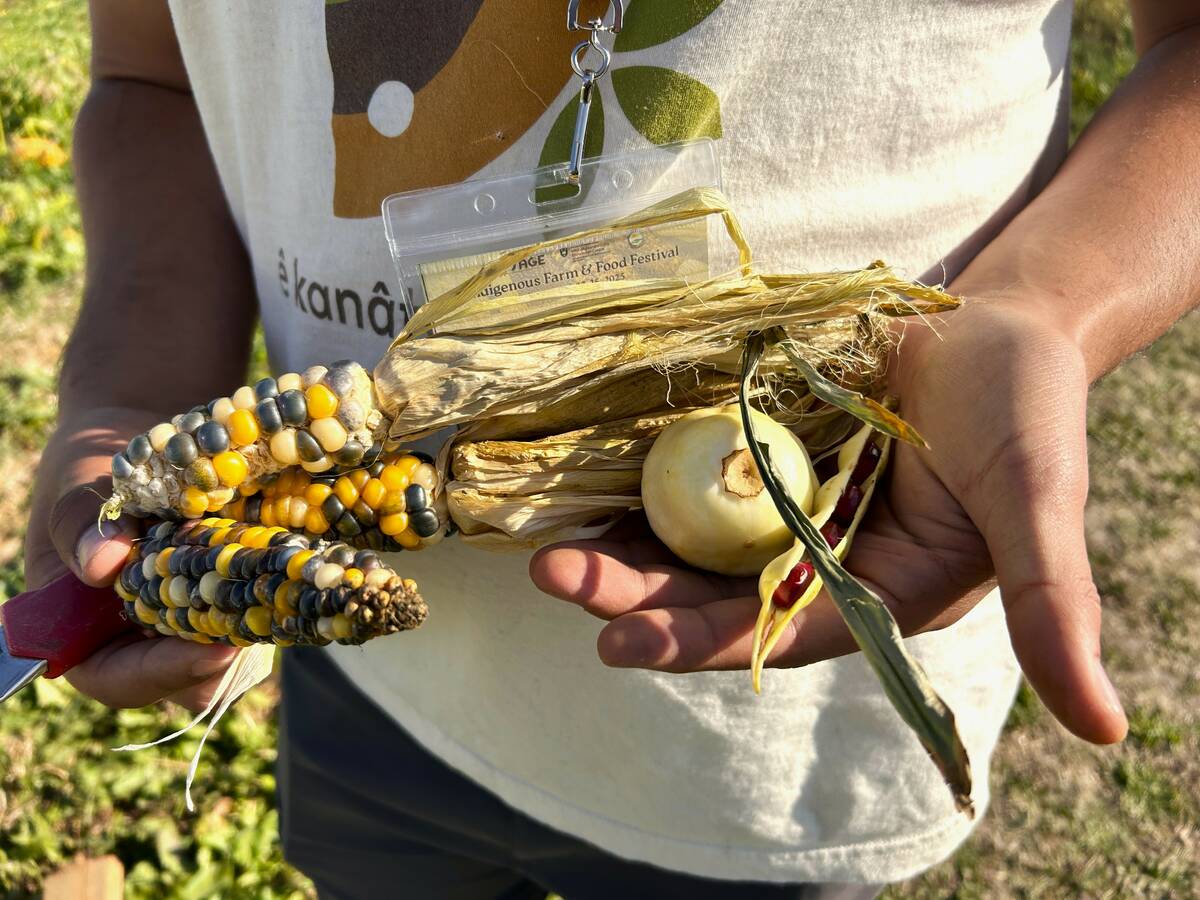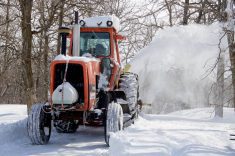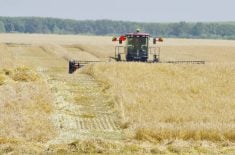Overview
Harvest has started in winter wheat and fall rye, with a good portion of those crops already combined. Reported yields are average for both crops.
Crop condition looks good to very good in most parts of the province, pea harvest has begun in the northwest region, and widespread harvest is expected to begin for spring cereals in about two weeks, with some early barley coming off in the past few days.
Read Also

Regenerative practices meet Indigenous knowledge on the Prairies
What do traditional Indigenous agricultural practices and regenerative agriculture have in common? Quite a lot it turns out.
Insect concerns have popped up in localized spots across Manitoba, lygus bugs in the Swan Valley, and soybean aphids, cereal aphids, and grasshoppers throughout Manitoba.
Soybean aphids have reached economic thresholds in some crops, while many populations remain below thresholds but should be monitored closely.
The Manitoba Hay Listing Service is active; producers with extra feed or looking for feed are encouraged to list their available supplies for sale.
Cereals
Winter cereal grains
Fall rye harvest is underway, pending drying down from yesterday’s rainfall. Yield are reported between 45 to 90 bu/acre, averaging between 75 to 85 bu/acre. Straw volumes are high and swathing is common.
Higher levels of ergot have been reported in fall rye.
Many farmers have commented that they are intending to seed more fall rye this autumn if conditions remain favourable, especially on ground that had been summerfallowed due to excessive moisture.
Many winter wheat fields are harvested, yield reports are between 60 to 75 bu/acre. Harvest will continue
as humidity drops and weather conditions allow in the coming days. Quality has been variable.
Spring cereal grains
Spring wheat is beginning to turn colour in the heads, and kernel development is reaching hard dough in most locations. The spring wheat crop is rated mostly good to excellent (Table 2), and pre-harvest application may begin in approximately 10 days on the earliest crops. Pre-harvest application may be more common this year as crop maturity is less uniform in some locations due to delayed seeding/emergence.
Wheat crops have elevated levels of disease due to favourable conditions, fusarium, septoria, and smut are more common this year.
Barley crops range from milk to hard dough stages, with malt crops most advanced, and greenfeed or very late-seeded fields further behind. A limited start to harvest has begin near Starbuck in the Central region.Oat crops are reaching hard dough in the most advanced fields, head glumes are starting to turn colour.
Oat-birdcherry and English grain aphids are noticeable in a number of oat fields, mostly found on the undersides of the flag leaf. Populations are being monitored, and some spraying has occurred where thresholds (12-15 aphids/stem prior to soft dough) are reached.
High levels of beneficial insect parasitism of aphids has been observed in many crops this year.
Crown rust on oats has been reported in a few cases in the Southwest region, dependent on variety.
Corn
Corn development ranges from R2 (blister stage) to R3 (milk stage).
Silks are dry and dropping off the ear, seed fill is ongoing. Ensiling corn for feed will begin shortly.
Oilseeds
Canola
Canola crops are variable across Manitoba, with many in excellent condition and others in poor condition with thin stands. Crop staging ranges from full bloom to swath timing (60% seed colour change).
Large areas of late-seeded canola along the Yellowhead Highway (PTH 16) and north toward Riding Mountain National Park are in mid to late bloom, and require a month of good growing conditions to mature.
Much of the canola in the southern belt of the province is in full pod this week.
The annual canola disease survey is beginning this week, where a geographic-weighted survey will assess a representative sample of fields for blackleg, sclerotinia, verticillium, clubroot, and other diseases.
Insect pressure remains low in canola.
Flax & sunflowers
Flax bolls are filling, seed is soft and white. Bolls remain green at this time.
Sunflowers are in the R5 stages, with most flowers in full bloom this past week, and now reaching R6 as
pollination is complete on the most advanced fields.
Basal sclerotinia infection is prevalent in many sunflower fields, but incidence within a field remains low.
Confectionary sunflower acres have dropped dramatically lower than in previous years, with many farmers citing a lack of effective in-crop herbicide options and late contracting to begin the 2022 crop year.
Pulses
Soybeans have reached the R5 to R6 stages, many fields in southern Manitoba could use a good rain soon to help fill the uppermost pods.
Scattered reports of soybean aphids in all regions, with a few fields exceeding economic action threshold levels, and spraying in the Eastern (Beausejour to Lac du Bonnet) and Central (Carman) regions.
Some pea crops toward the western side of the province have been desiccated and harvest has started. In the Red River Valley harvest has not yet begun, as crops are beginning to turn colour at the base.
Dry bean stage ranges from R7 to R8. Some bacterial blight has been reported, but is not a major issue. Late-season white mould discovered in bean fields, but generally too late to impact yields.
Special crops
Irrigation is still ongoing on potato fields, subsoils are drier below 4 inches depth where rainfall was not as frequent.
Colorado potato beetle pressure is high in the Winkler to Carman area, with resistant populations noted, and may be expanding to other areas.
Potato crops are doing well overall, and are approximately 7 to 10 days behind normal given the seeding delays this spring.
Top-kill on fresh potatoes has started, and will begin on seed potatoes within a week.
Forages & livestock
Forages
Dairy farms have completed second-cut hay, while beef cattle producers are just starting or continuing a second cut as weather allows.
Feed quality in the Eastern and Interlake regions is moderate to poor, given frequent rains on cut swathes and delays on reaching hay that is becoming too mature.
Hay volumes are average to above average in all regions of the province.
Native hay is being cut and baled in the Northwest region, as well as greenfeed and cereal silage harvest
with good yields.
Alfalfa has entered the critical fall harvest period, and cannot be cut until after a killing frost without increased risk of winterkill.
Livestock
Pasture growth has slowed, as expected for mid-summer, and cattle feed supplies are adequate.
Dugouts and sloughs are at 90% capacity, while creek and stream flows have slowed.
Livestock water supplies remain sufficient.
Regional comments
Southwest
Overnight low temperatures across the region have been cooler this week, while daytime highs reach 30 C. Much of the region received a good, timely rain on Monday, which will help with yield in later-season soybeans and corn. Pivot irrigation is ongoing in potatoes and some other crops where infrastructure allows. Harvest has started on winter cereals, and pre-harvest application has started on some early seeded oats. Crops look very good overall, despite areas of fields that had previously drowned-out, remaining stands are doing well.
Northwest
Good weather this week helped advance crop maturity. Precipitation over the weekend was heavy in some areas of the region while some areas received nothing. The highest rainfall recorded was in Swan Valley at 30 mm accumulated for the week, with some localized showers missing official weather stations, recording up to 50 mm. Rainfall was at times heavy over the weekend, again causing lodging in some cereals. Most mornings have had very heavy dew.
Harvest has started for field peas in the Swan Valley, while most other crops are turning colour, and the occasional field has been desiccated. Lodging events may affect grain quality in cereal crops in the southwestern part of the region near Dauphin and Ste. Rose, since cereals are in the milk to soft dough stages. Insecticide applications for Lygus bug control have started in the Swan Valley on canola crops, while grasshoppers remain a concern across much of the region.
Central
Warm, seasonal temperatures dominated much of the previous week, with thunderstorms arriving Monday evening in the northern part of the region, in a band along PTH 2 and northward to MacGregor and Portage la Prairie, moving eastward to Winnipeg. Hailstones fell in the Rathwell area, damage assessment is ongoing. Crops appear in very good condition throughout much of the region, and producers are anxiously awaiting harvest and hoping to miss damaging weather systems. Many farmers are expecting to use a pre-harvest aid or swath more frequently this year, as crops are more uneven due to delayed seeding and emergence issues.
Eastern
Thunderstorms swept over the entire region Monday evening, with amounts ranging from 4 to 100 mm. The previous seven days were dry and sunny. Heaviest rainfall accumulations occurred in the Beausejour/Vivian area, with the rest of the region recording between 20 to 55 mm. Strong winds and intense downpours occurred in some areas, leaving crops lodged. Standing water and backed-up ditches are evident in the highest rainfall areas. Temperatures were generally normal to above normal, and humidity remained very high. Up until the rain, field access continued to improve and progress was being made on field operations. Haying and harvest progress will be at a standstill for the next several days.
Interlake
Winter cereal harvest has started in the region, with good yields, up to 100 bu/acre in fall rye, and 80 bu/acre in winter wheat. Drowned out areas are lowering field averages, but remaining parts of the crop are doing quite well considering the challenging moisture conditions this year. Harvest in winter cereals is expected to ramp up as the ground dries out from the most recent thunderstorm event. Canola and spring cereals remain quite green, and are at least two week away from harvest. Conditions in the northern Interlake are less favourable, with an additional two to four inches rain over the weekend on already saturated ground.















